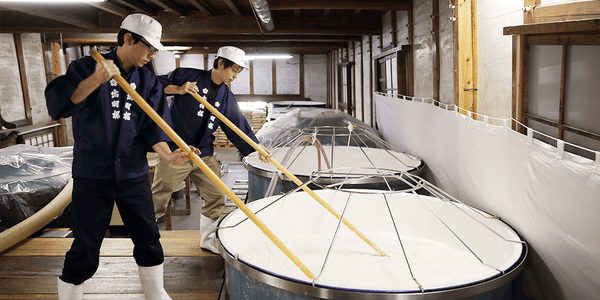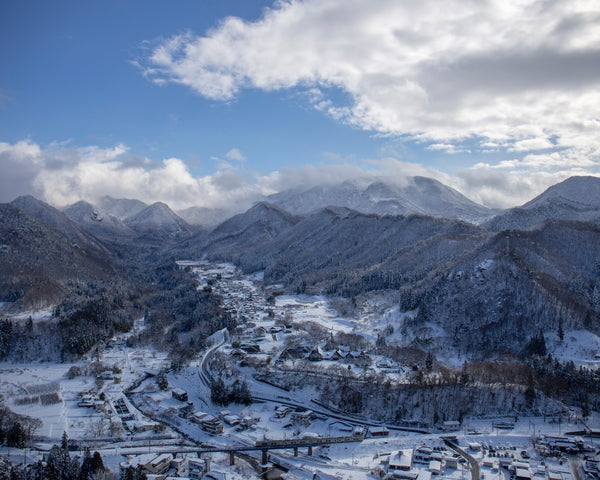Founded in 1892, the Dewazakura Sake Brewery is rooted in the heart of Tendo City, Yamagata Prefecture, Japan. This remarkable brewery is the brainchild of Seijiro Nakano, whose family had a significant sake brewing heritage, owning Kuma Masamune Sake Brewery. The brewery's location, nestled within a fertile basin surrounded by high mountains, lends itself to the perfect climate for rice cultivation, a key ingredient in sake brewing.
While the Dewazakura Sake Brewery holds a rich history, it is perhaps best known for its revolutionary approach to Ginjo sake. In 1980, the brewery launched Oka Ginjo, a new style of sake that would ultimately transform the industry and popularize Ginjo. This was the first time a sake brewery had made such a bold move, as Ginjo was mainly brewed for competition and was not well-known to the public. However, Dewazakura aimed to make this exquisite sake accessible to everyone, offering it at an affordable price.

The pioneering decision to introduce Oka Ginjo to the broader market was not just successful; it was groundbreaking. For 12 consecutive years starting in 2008, Oka Ginjo topped the Ginjo category in the Jizake Ninki Meigara Ranking, a prestigious guidebook on the most popular local sake. Its impact was not limited to Japan; by 2011, Britain's oldest wine merchant, Berry Bros. & Rudd, started to sell Oka Ginjo, marking the first Japanese sake in their lineup. The influence of Oka Ginjo even extended to the cosmetics industry, contributing to the scent development of a new product for the SK-II cosmetic brand.
In a significant step towards global recognition of their sake, Dewazakura began exporting in 1997. They now deliver their esteemed sake to over 30 countries, bringing the joy of drinking Ginjo to people worldwide and making "Ginjo" a household term in many parts of the globe.

The journey to success was not always smooth for Dewazakura. They faced challenges under the old tier system of sake classification, which was in use from 1943 to 1992. Under this system, Dewazakura was categorised as a second-grade brewery. However, they challenged the status quo by focusing on the strength of their Ginjo sake, sidestepping the grading assessments, and selling their ginjo as "unranked second grade sake." This strategic move allowed them to sell high-quality sake at a reasonable price, and as a result, they were able to redefine their business model.
Quality is at the core of Dewazakura's brewing philosophy. They are meticulous about their process, focusing on details such as water absorption and the state of the steamed rice used in brewing. The layout of their brewery is designed with an emphasis on cleanliness, even if it requires more effort to transport materials. The room containing yeast, for example, is located far away from other rooms to avoid bacteria breeding due to moisture.
 Snowy Yamagata Precture
Snowy Yamagata Precture
As Dewazakura looks to the future, they remain committed to promoting Ginjo sake. With changing consumer preferences and a more diverse industry, they face the challenge of broadening the appeal of Ginjo in this new context. To meet this challenge, they are planning to open their brewery to visitors, providing an immersive experience for those eager to deepen their understanding of sake. With an increasing trend in exports, Dewazakura anticipates growth in the overseas market and continues to strive to share the beauty of sake with the world.
Experience the exquisite taste and pioneering spirit of Dewazakura Sake Brewery, where tradition meets innovation in every bottle of sake. As you sip on their renowned Oka Ginjo, you are not just enjoying a drink; you are partaking in a piece of history, a testament to their resilience, and a celebration of their unwavering commitment to quality and excellence.

Comments (0)
Back to Sorakami Sake Blog